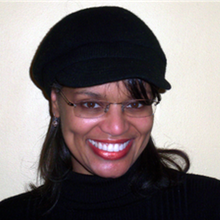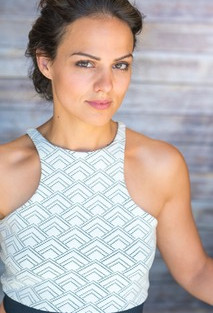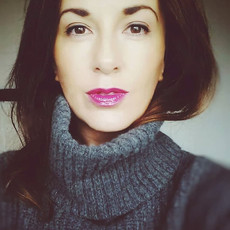Creating Better Female Characters Part 3 - Lead Role Differences
- Phil Clarke

- Dec 18, 2019
- 10 min read

Thanks to a busy summer of script consults and writing commissions, it's been a long wait for this third article in the series. But we're here now – that's the main thing. So without further ado let's dig deeper into the contrasts between male and female lead roles in today's screen stories.
In this article I wanted to explore how male and female roles differ. And then perhaps if we can get a clear handle on these distinctions, we might better understand how to improve the parts and their functions usually given to actresses.
So, the question:
What are the key differences between male and female lead roles?
... was put, as ever, to the Fab 50 – fifty talented actresses and female professionals working in the film and television industries – to get their points of view. And once again they came up with clear insights. The clearest and most common of which was...
LEADS TEND TO BE MALE
Sure, this may be obvious, but I believe it's still important to state as it clearly demonstrates the lack of equality when it comes to lead roles on the big and small screen. As British-born actress Hannah Roberts says, ❝When it comes to lead roles there are still more male lead roles than female. The gap is closing as we know but there are still far fewer lead roles available for women than men.❞
And these lead roles drive the stories. Consequently, men are still seen as the proactive figure with women reduced to secondary, supporting, passive roles.
The number of women characters who drive the story is very much in the minority. We're still seeing men in the majority of lead roles. As award-winning filmmaker and co-founder of Candybank Productions Natalie Buse explains, ❝The male is the one who solves the problem, whatever the problem is. The male character is often the one whose action and adversity drives the story forward. The female is often only supporting.❞ Star of Rent and The Hamiltons, Mackenzie Firgens goes further, suggesting the: ❝male equals the whole story in the movie and the hero journey [whereas the] female is his prize.❞
While there have been signs of change in recent years, it still holds true that men are given the hero role and play the protagonist in the majority of screen stories. Women shouldn't be relegated to a limited, secondary role as a routine. If the world needs saving, it shouldn't arbitrarily fall to the man - women can save the world too.
And I would agree with actress and host Jennifer Field that: ❝More women characters should be in that kind of leading role.❞ Or at the very least we should be following the suggestion of Jennifer Durrans to ❝... see more of a unity between the sexes as opposed to the two sexes being in different camps, so to speak.❞
Simply put, the imbalance of lead roles needs to be addressed to make it a more accurate reflection of reality. As film and stage actress Lizzie Aaryn-Stanton rightly states: ❝If we're accurately representing the human population, 52% of characters written should be female. So let's see 52% of lead roles also be female. Similar rules should apply for race and sexuality too - let's represent our society.❞
So we've established that the lead roles are given too readily to the owners of XY chromosomes, but what exactly does this mean? Well, the next most common difference given by the Fab 50 was one of action:
ACTION MEN, INACTION WOMEN
As Mhairi Calvey makes clear, ❝I think the differences between male and female roles in film and TV are that men are given a bit more to do.❞ Writer, producer, director Katherine Nero agrees, suggesting, ❝there is still a tendency to have the action driven by male leads while females are passive.❞ German writer-producer Mari Stracke says, ❝Men are still portrayed as the stronger sex.❞
❝The men tend to have more heroic, empowering stories,❞ says Jennifer Claire, ❝but the women tend to be more supportive of the men.❞
Hannah Roberts notices that female leads ❝less often than men … seem to play a role of the lover, the best friend etc. rather than standing strong as a lead role in their own right with their own purpose.❞
Jessica Jones and Cursed star Adaku Ononogbo highlights a clear obsolescence: ❝Male characters are usually seen as saviours, knights in shining armour types of characters to 'save the day' while the female characters "need" saving. Male characters can seem boundless, fearless even, but female characters are written with amateur or outdated limitations.❞
I hope that this old-fashioned approach to men and women is already well-known, but just in case there are those writers out there who aren't aware, I think it's crucial we keep pushing this point home; that female leads don't have to be quite so passive.
STATE OF INDEPENDENCE
The fact that the lead role goes to a man does then lead to male characters having more independence. Too many lead roles for women still depend on a man. Former child star of Bloodline Emmerson Garfield states: ❝Leading men depend on themselves, a great quality. If there is a leading woman, chances are she has someone else by her side throughout the film instead of total independence.❞ And this difference was spotted by many of the Fab 50 including actress, writer and producer Lauren Elyse Buckley who found that: ❝Most female driven films are still about the women in relationship to a man or her children or something that doesn't define most men in big blockbuster films.❞ Fellow triple threat Cassandra Ebner, too, believes: ❝Most female-led stories have a love interest that helps carry the story forward [whereas many] stories for men do not have this as their main plot or do not have a love interest in their story at all.❞
It's as if writers and film-makers lack the confidence to allow the female lead to carry the story all by herself. So what needs to change here? Well, Cassandra Ebner continues: ❝I would like to see less movies about women needing a human in their life to be a better person or make hard choices.❞ Lauren Elyse Buckley agrees: ❝I want to see more women in roles that stand independent from their usual gender roles.❞ Film production veteran S.J. Charles concurs, suggesting we need to ❝have more characters whose main focus isn't just to find a man.❞
OVERSEXUALISATION
Alarmingly, the focus on the physical raised its head once again as it was mentioned by the majority of the Fab 50 when asked this question.
Whether it's ❝a woman using her sexuality or womanhood to get what she wants from a man❞ as asserted by Nadia Sohawon or as June Smith points out, women, ❝expected to be unhealthily thin if a lead actress in a romantic lead [whereas] only average to overweight women get leads in comedy❞, too much attention is placed on this side of being a woman.
There is a real imbalance regarding many of today's lead characters when it comes to the physical aspect of the role. Reality simply isn't being reflected. I know storytelling is often about escapism but we're in the realms of true fantasy, here. It's one rule for men, another for women as Elizabeth Bower explains: ❝Women often have to be sexy and at least 15 years younger than the men who have beer guts and bad skin and an inexplicably out of league partner that we're all just supposed to accept.❞
And lastly, British actress Natalie Martins puts it simply: ❝Women do always have to appear more beautiful and youthful than men in lead roles and it would be nice to see that change.❞ I wholeheartedly agree. In fact, it wouldn't just be nice, I feel it's imperative.
MEN ARE MORE COMPLICATED
❝The variety and complexity of the characters❞, as actress-producer and star of The Isle Tori Butler Hart puts it, appears to differ greatly between the sexes. ❝There is still a tendency for a film with a female lead to have to be about a female story rather than an intriguing and compelling character that just happens to be a woman.❞
And often what makes leads complex are their individual past experiences. And on this, Natalie Buse argued: ❝Male characters’ drives are often more richly informed by their backstories, their whole lives seem to have much more happen to them than women do.❞
It was also interesting to see many of the Fab 50 submit that male leads have the chance to be more interesting, possess more flaws and still be the chief protagonist. This was astutely put by South African star of Summer of Rockets Suanne Braun who declared: ❝... there are still stereotypes in both male and female roles but with male roles, the stereotype is often considerably more flattering and favourable than the female one. For example, a male character can be a drug addicted alcoholic with violent tendencies and will still have multiple lovers, many of whom would be younger than him and yet he’s still the central character of the piece. The female equivalent would never make it through the film. She would die on page 3. And be judged for her poor choices and behaviour for the duration of the piece.❞
AGE IS MOST DEFINITELY A NUMBER
The next most frequent difference given by the Fab 50 between male and female lead roles was yet another often-recognised issue – that of age. American actress and indie filmmaker Daniele Passantino tells us, ❝Age is the biggest difference with lead roles. Male leads can be any age, and we are accepting of that as audiences. I think the perception needs to change.❞
And this was supported by Lucifer and Lost In Space actress Annamaria DeMara who went on to say, ❝as women get older we are so much more experienced yet women get less opportunities as they age for leads. Why not let our leads have grey strands of hair and … wrinkles? We see men all the time like this – it’s time to appreciate what women look like as they age on and off screen.❞
Actress and writer Laura Cayouette, best known for her work in Django Unchained, agrees and gives us the perfect example: ❝when a female lead is older than the male lead, it’s a topic. Maybe it’s even the whole plot. But when Sean Connery is 69 and Zeta-Jones is 30 in Entrapment, it’s not even mentioned.❞
LESS DIALOGUE FOR THE LADIES
A large proportion of the Fab 50 voiced their concerns about... well, voice.
As S.J. Charles states, one of ❝the key differences between male and female lead roles can often be dialogue, and the length of dialogue they get.❞ Yes, it's true. Surprising, in fact. And as it's not appropriate for me to say, I'll let actress and producer Lisa Ronaghan field this one: ❝Despite the social cliché, women actually talk a lot less in films than their male counterparts.❞ Kaili Turner agrees, saying ❝male leads have more lines, even in women-focused movies. It's annoying.❞
THE TIMES ARE A-CHANGIN'
But it's not all doom and gloom. Many of the Fab 50 were quick to point out that things are moving in the right direction. ❝I think, finally, the differences are becoming smaller❞ says prolific producer and writer Caroline Spence. ❝Actors like Michelle Rodriguez and Sandra Bullock ... have always played interesting, funny or tough characters, and I feel the tide is turning now to allow for more opportunities for others to follow.❞
Actress and Royal Academy of Music graduate Cristina Ryan concurs: ❝I think the gap of differences between what a male and female can and cannot do on screen is gradually closing.❞ Lisa Ronaghan reiterates: ❝In terms of leading roles, I think there have been a lot more film releases with dynamic interesting female leads in the last few years. I guess there are certain genres which still see predominantly male dominated stories such as Action, Martial Arts and Sports movies. However, there has been a shift, such as I, Tonya and Atomic Blonde.❞
This positive progression was echoed by Natalie Martins: ❝It's getting better to be fair, slowly, but it is getting better. I feel more inspired by programmes and films I watch now than I might have done when I was a lot younger.❞
And we'll let legendary V actress Jane Badler have the last word on this: ❝If you had asked me that question ten years ago or even five I might have had a whole different answer. With movies like Ocean 8, Red Sparrow, the Hunger Games, Wonder Woman … more and more women are taking on the male roles of [being] powerful, smart, successful… The audience is demanding it and it is slowly changing . It is an exciting time.❞
SUMMARY
Just as the Fab 50 were in agreement on the main differences between male and female lead roles, so were they also in accord when it came to what was needed.
S.J. Charles: ❝It would be wonderful to have more balance in female lead portrayal.❞ LA-based actress, writer and producer Heidi Cox echoes this idea: ❝I'd like to simply see a balance.❞
Balance is key. Nobody is asking for a reversal where women are excessively favoured in so many areas as men have historically been in film and TV. These Fab 50 - and thousands like them - just want fair treatment, equality. As Cristina Ryan muses: ❝I think the attitude towards equal rights for males and females is definitely being promoted however there are still some traditional mindsets and settings still in place. Hopefully with time…❞
I'd like to give the final word to actress, singer and producer Isabella Tugman who covers many of the points raised in this article:
❝Men get more roles, more dialogue, more character variances, and more diverse representation. In the real world, women have just as varied a spectrum of characteristics and experiences as men, yet female portrayal in film has been far more limited. I find it insightful to think of a distinctive male role, like that of the brilliant autistic man portrayed by Dustin Hoffman in “Rain Man”, and attempt to recall a similar female role in a film, if there’s ever been one. ❝This exercise brings perspective to the discrepancy between male and female representation and can be done to compare character traits, relationships, conflicts, etc. Additional tools, like the Bechdel Test, continue to show how limited women’s relationships in film have been.❞
Next time: In part IV of my CREATING BETTER FEMALE CHARACTERS series the Fab 50 and I will be focusing on the rather thorny and often misunderstood issue of what it means to be a strong female character and how we might create them.

















































































Comments